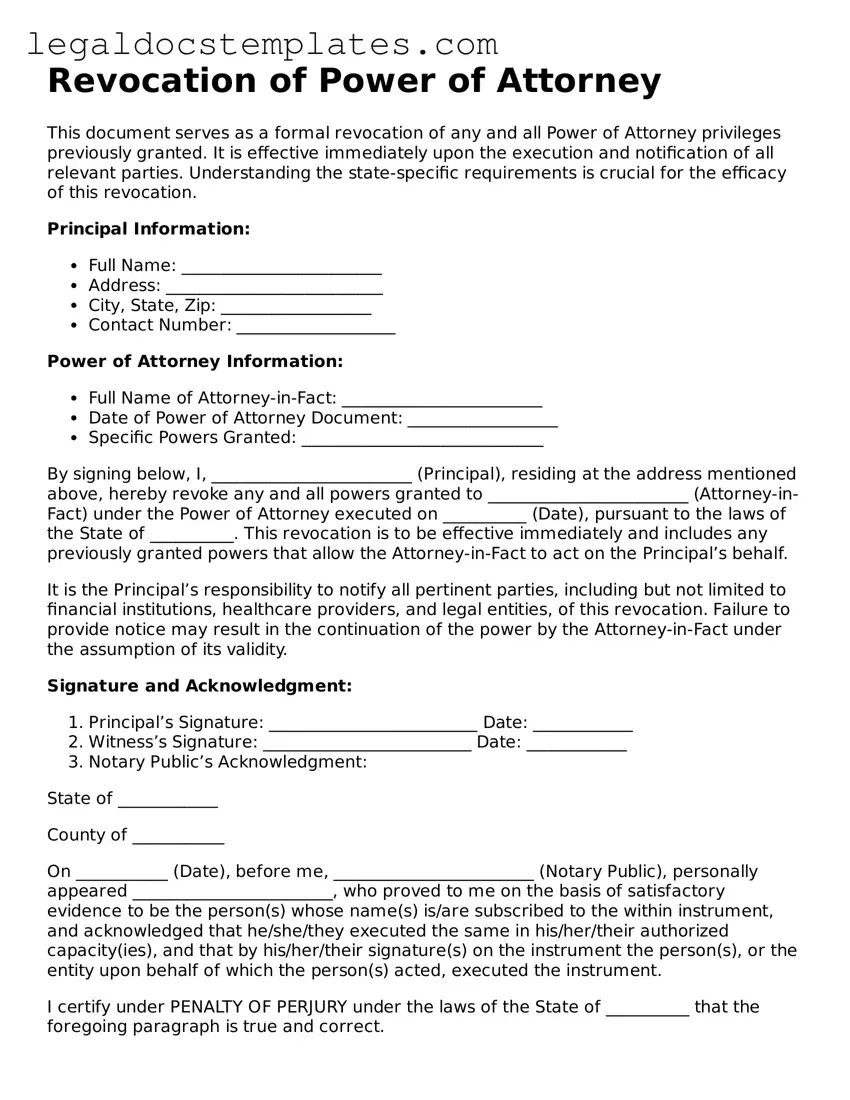Revocation of Power of Attorney
This document serves as a formal revocation of any and all Power of Attorney privileges previously granted. It is effective immediately upon the execution and notification of all relevant parties. Understanding the state-specific requirements is crucial for the efficacy of this revocation.
Principal Information:
- Full Name: ________________________
- Address: __________________________
- City, State, Zip: __________________
- Contact Number: ___________________
Power of Attorney Information:
- Full Name of Attorney-in-Fact: ________________________
- Date of Power of Attorney Document: __________________
- Specific Powers Granted: _____________________________
By signing below, I, ________________________ (Principal), residing at the address mentioned above, hereby revoke any and all powers granted to ________________________ (Attorney-in-Fact) under the Power of Attorney executed on __________ (Date), pursuant to the laws of the State of __________. This revocation is to be effective immediately and includes any previously granted powers that allow the Attorney-in-Fact to act on the Principal’s behalf.
It is the Principal’s responsibility to notify all pertinent parties, including but not limited to financial institutions, healthcare providers, and legal entities, of this revocation. Failure to provide notice may result in the continuation of the power by the Attorney-in-Fact under the assumption of its validity.
Signature and Acknowledgment:
- Principal’s Signature: _________________________ Date: ____________
- Witness’s Signature: _________________________ Date: ____________
- Notary Public’s Acknowledgment:
State of ____________
County of ___________
On ___________ (Date), before me, ________________________ (Notary Public), personally appeared ________________________, who proved to me on the basis of satisfactory evidence to be the person(s) whose name(s) is/are subscribed to the within instrument, and acknowledged that he/she/they executed the same in his/her/their authorized capacity(ies), and that by his/her/their signature(s) on the instrument the person(s), or the entity upon behalf of which the person(s) acted, executed the instrument.
I certify under PENALTY OF PERJURY under the laws of the State of __________ that the foregoing paragraph is true and correct.
WITNESS my hand and official seal.
Signature _________________________ (Seal)
